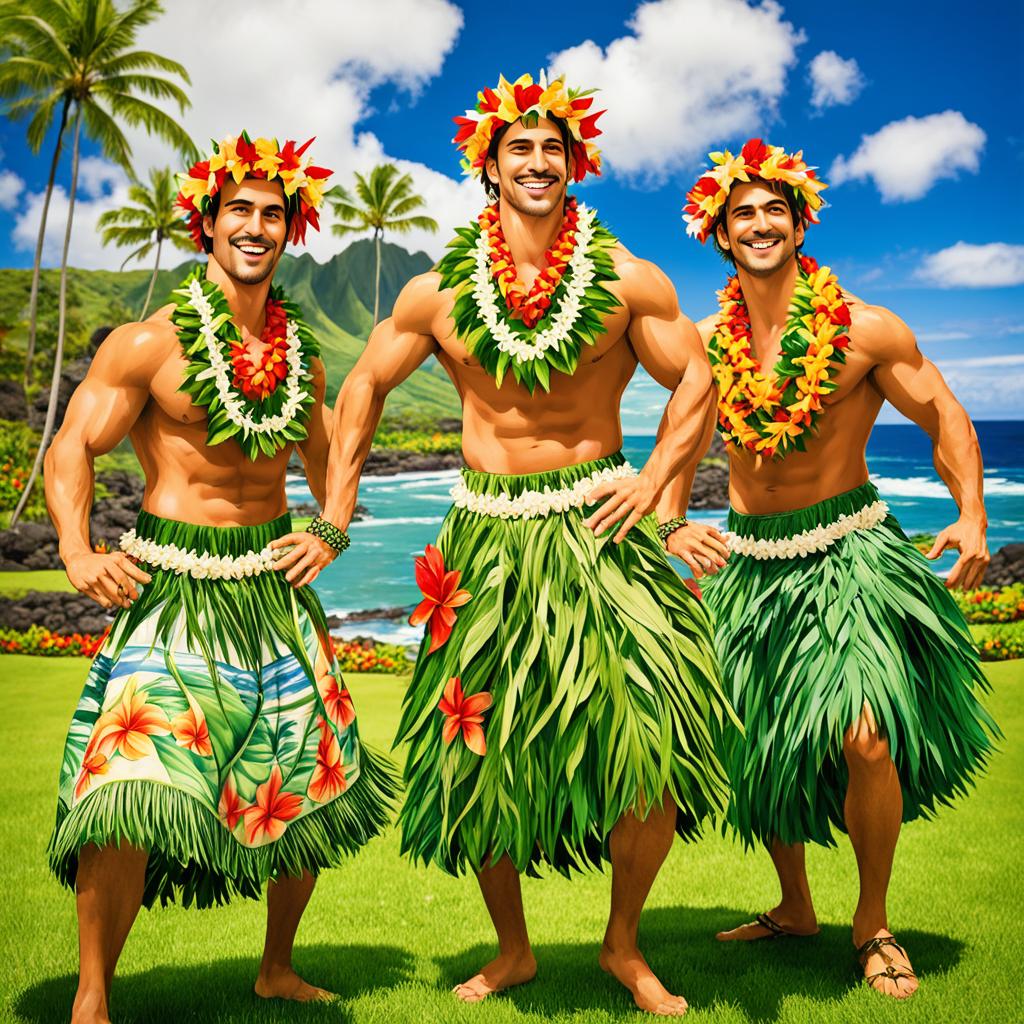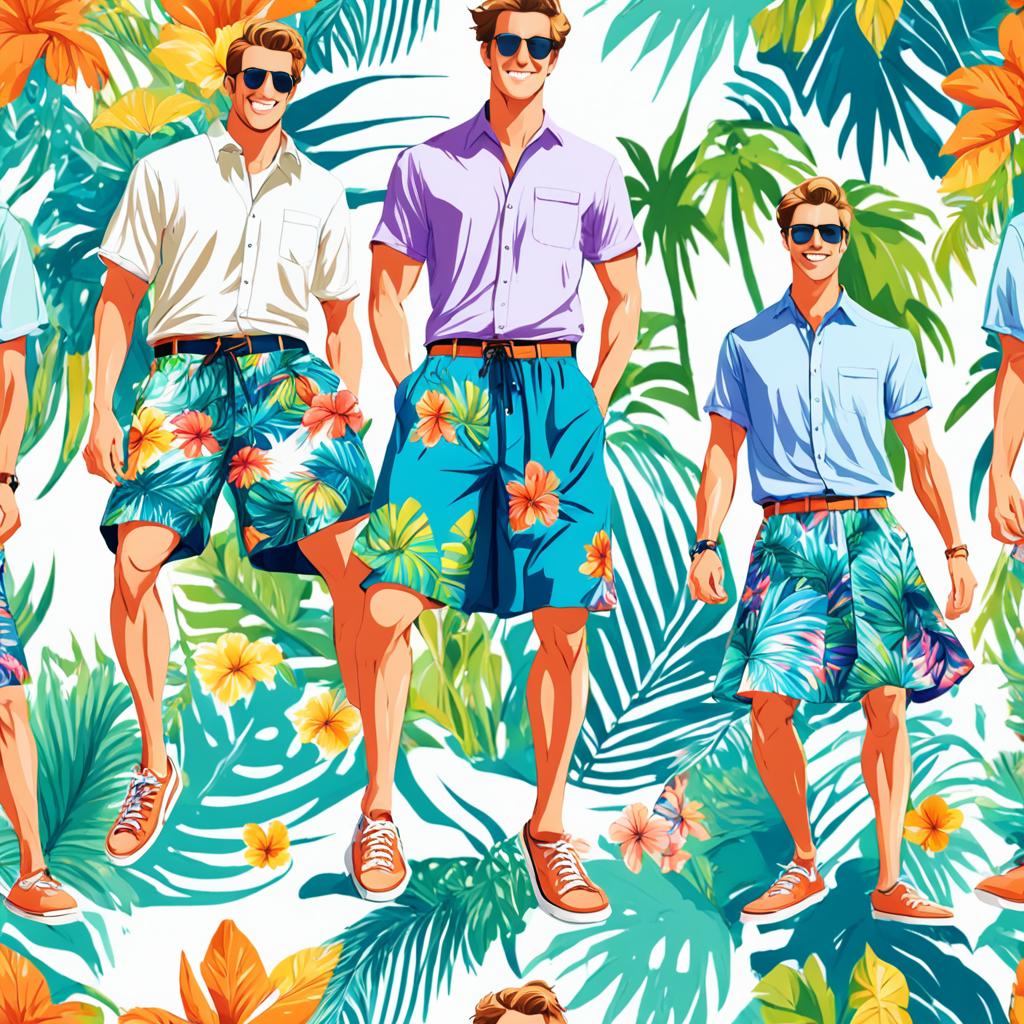Have you ever wondered what men’s Hawaiian skirts are called? Are they simply grass skirts or is there another name for them? If you’re curious about the traditional garments worn by men in Hawaiian and Polynesian culture, you’ve come to the right place. In this article, we’ll explore the fascinating world of men’s Hawaiian skirts and uncover their true names and significance. From the iconic grass skirts to the rich history and variations of these skirts, we’ll delve into the depths of Polynesian fashion and culture. So, let’s unravel the mystery together and discover the true identity of men’s Hawaiian skirts!
History and Cultural Significance of Men’s Hawaiian Skirts

Grass skirts have a long and rich history in Hawaii and other Polynesian cultures. These skirts, made from plant fibers and leaves, such as hau in Hawaii and fau in Samoa and Tonga, were traditionally worn by dancers to accentuate their movements during traditional performances.
The cultural significance of grass skirts extends beyond their use in dance costumes. They are a symbol of Polynesian culture and have played a significant role in the development and preservation of traditional hula dancing. Over time, grass skirts have become synonymous with the beauty and authenticity of Polynesian traditions.
In the late 19th century, Hawaiian dancers started incorporating grass skirts into their performances on the vaudeville circuit in the United States mainland. This exposure helped popularize grass skirts and introduced them to a wider audience. The use of grass skirts became more widespread with the development of hula ‘auana, a style of hula dance that incorporated western influences.
During World War II, grass skirts gained international attention and were sought after as souvenirs by servicemen stationed in the Pacific. The popularity of grass skirts continued to grow with the rise of tiki culture and the influence of Hawaiian-themed entertainment in the mainstream media.
The cultural significance of grass skirts and their association with traditional hula dancing has helped preserve these iconic garments. Today, they continue to be worn by hula dancers, showcasing the pride and heritage of Polynesian cultures.
Variations and Materials Used in Men’s Hawaiian Skirts

Men’s Hawaiian skirts come in various styles and are made with different materials depending on the Polynesian culture they originate from. In Hawaii, traditional Polynesian skirts were traditionally made with hibiscus bark, known as hau. Today, other plant fibers, such as dried grasses and leaves, are commonly used.
One popular style of Hawaiian skirt is the ti leaf skirt. Ti leaf skirts are made by stripping the thick end of ti leaves and draping them over a waist cord, creating a skirt-like garment. The ti leaf’s vibrant green color adds a natural and tropical touch to the skirt.
Another type of traditional Polynesian skirt is the pandanus leaf skirt. Pandanus leaves are carefully woven or plaited together to create a sturdy and visually striking skirt. The intricate weaving techniques used in creating pandanus leaf skirts make them a true work of art.
Māori culture in New Zealand has its own distinct style of skirt called piupiu. Maori piupiu skirts are made from prepared flax fibers woven or plaited together. The flax fibers are traditionally harvested, prepared, and then combined to create a skirt that is both elegant and durable.
Each Polynesian culture has its own unique techniques and designs for creating these traditional skirts, resulting in a plethora of beautiful and meaningful garments that reflect the rich cultural heritage of the region.
| Skirt Type | Materials |
|---|---|
| Hibiscus Bark Skirts | Hibiscus bark (hau) |
| Ti Leaf Skirts | Ti leaves |
| Pandanus Leaf Skirts | Pandanus leaves |
| Flax Fiber Skirts | Flax fibers |
| Maori Piupiu Skirts | Prepared flax fibers |
Modern Uses and Adaptations of Men’s Hawaiian Skirts

Men’s Hawaiian skirts, particularly grass skirts, have become a prominent feature in modern Hawaiian fashion and cultural expressions. These iconic skirts are often seen at Hawaiian-themed events, parties, and performances, adding an authentic touch to the atmosphere. While grass skirts continue to be worn by hula dancers who perform traditional Hawaiian dances, they have also undergone modern adaptations in the world of fashion.
Hula-inspired fashion has gained popularity, with various clothing and accessories that draw inspiration from traditional Polynesian culture. These modern adaptations incorporate elements of men’s Hawaiian skirts, such as the use of natural fibers, patterns, and motifs. Designers integrate the vibrant and tropical spirit of Hawaii and the broader Polynesian culture into their creations.
Modern Hawaiian fashion encompasses a wide range of clothing and accessories, including shirts, dresses, swimsuits, and jewelry, all inspired by the rich heritage of Hawaii. These fashion items often feature bold, colorful prints that reflect the tropical paradise of the islands.
Hawaiian-themed costumes are another area where men’s Hawaiian skirts play a significant role. Whether it’s for a costume party, Halloween, or a themed event, Hawaiian-themed costumes incorporating grass skirts and other traditional elements are incredibly popular. These costumes allow individuals to embrace the vibrant spirit of Hawaii and express their love for Polynesian culture.
When it comes to Polynesian-inspired clothing, men’s Hawaiian skirts are just the beginning. There is a wide variety of attire available, ranging from traditional Polynesian costumes to modern interpretations. These garments allow people to connect with the culture and history of Polynesia while showcasing their individual style.
Overall, men’s Hawaiian skirts have evolved from traditional attire to symbols of modern Hawaiian fashion, hula-inspired fashion, and Hawaiian-themed costumes. They represent the vibrant and tropical spirit of Hawaii and serve as a bridge between the past and the present, between tradition and modernity.
Where to Find and Purchase Men’s Hawaiian Skirts
If you’re looking to embrace the vibrant spirit of men’s Hawaiian skirts, there are various places where you can find and purchase them. Many Hawaiian clothing stores, both physical and online, offer a wide range of hula skirts and other Polynesian-inspired clothing.
These stores often have a selection of grass skirts, ti leaf skirts, and other traditional Hawaiian skirts. Whether you prefer the natural look of a grass skirt or the elegance of a ti leaf skirt, you’ll find options to suit your taste.
In addition to Hawaiian clothing stores, Polynesian dance supply shops are another great resource for finding men’s Hawaiian skirts. These shops cater to dancers and performers and provide a range of authentic Polynesian costumes and accessories, including grass skirts.
Whether you’re getting ready for a special event, attending a costume party, or simply want to add a touch of Polynesian culture to your wardrobe, there are plenty of options available to help you find and purchase men’s Hawaiian skirts.
FAQ
Q: What are men’s Hawaiian skirts called?
A: Men’s Hawaiian skirts are traditionally known as grass skirts or hula skirts.
Q: What materials are men’s Hawaiian skirts made of?
A: Men’s Hawaiian skirts are made with layers of plant fibers such as grasses, leaves, hibiscus bark, ti leaves, pandanus leaves, and root fibers depending on the Polynesian culture they originate from.
Q: What is the cultural significance of men’s Hawaiian skirts?
A: Men’s Hawaiian skirts, especially the grass skirts, have a long history and cultural significance in Hawaii and other Polynesian cultures. They are an integral part of traditional hula dancing and have become iconic symbols of the vibrant and tropical spirit of Hawaii and Polynesian culture.
Q: Where can I find and purchase men’s Hawaiian skirts?
A: Men’s Hawaiian skirts can be found and purchased at Hawaiian clothing stores, both physical and online, as well as Polynesian dance supply shops that cater to dancers and performers.
